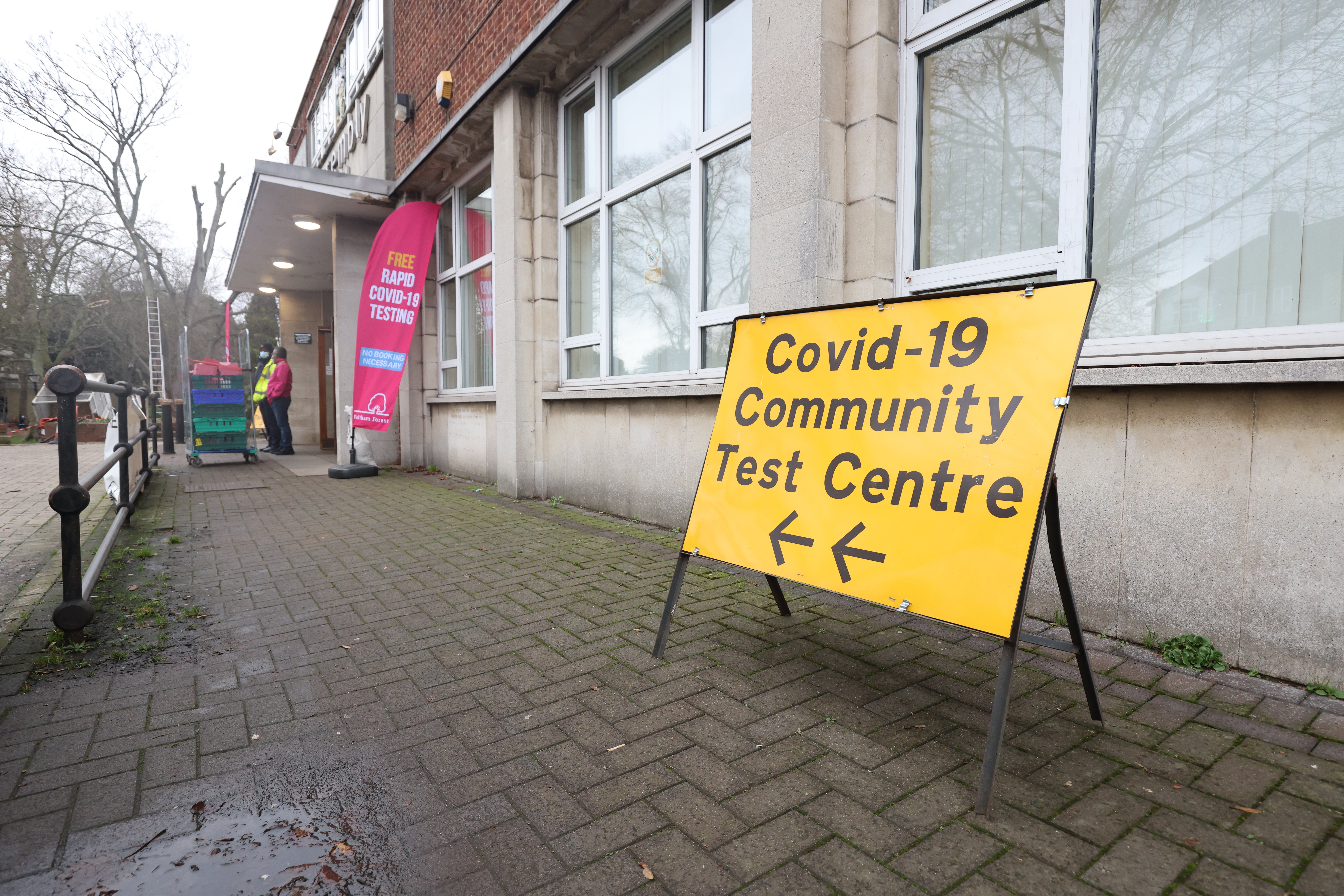Covid-19 infections rise in all UK nations with record levels in Scotland
The figures suggest coronavirus is once again becoming more prevalent.

Your support helps us to tell the story
From reproductive rights to climate change to Big Tech, The Independent is on the ground when the story is developing. Whether it's investigating the financials of Elon Musk's pro-Trump PAC or producing our latest documentary, 'The A Word', which shines a light on the American women fighting for reproductive rights, we know how important it is to parse out the facts from the messaging.
At such a critical moment in US history, we need reporters on the ground. Your donation allows us to keep sending journalists to speak to both sides of the story.
The Independent is trusted by Americans across the entire political spectrum. And unlike many other quality news outlets, we choose not to lock Americans out of our reporting and analysis with paywalls. We believe quality journalism should be available to everyone, paid for by those who can afford it.
Your support makes all the difference.Covid-19 infections have risen in all four nations of the UK, with levels in Scotland at a record high, new figures show.
It is the first time since the end of January that all nations have seen a simultaneous week-on-week increase in infections, and is the clearest indication yet that the virus is once again becoming more prevalent throughout the country.
Around one in 25 people in private households in England had Covid-19 in the week to March 5, or 2.1 million people, according to the Office for National Statistics (ONS).
This is up from one in 30, or 1.9 million people, in the previous week, and comes after three successive weeks where infections in England were estimated to have fallen.
By contrast Scotland has now seen infection levels rise for six weeks in a row, with 299,900 people likely to have had coronavirus last week, the equivalent of one in 18.
This is the highest figure for Scotland since estimates began in autumn 2020, according to analysis by the PA news agency.
The previous record was 297,400 people in the first week of this year.
Wales and Northern Ireland both saw a jump in prevalence last week following a period of falling infections, with the estimate for Wales up from 94,200 people to 97,900, one in 30, and Northern Ireland up from 106,300 people to 143,800, one in 13.
Across the UK as a whole, 2.6 million people were estimated to have coronavirus last week, up from 2.4 million.
The number stood at 4.3 million at the start of the year.
The ONS infection survey is the most reliable measure of the prevalence of coronavirus in the UK, and its latest findings provide the clearest indication so far that the broad downwards trend in infections since January has come to a halt.
Estimates for the next few weeks will confirm whether a new upward trend in infections is now under way.
The ONS survey uses a representative sample of swab tests collected regularly from tens of thousands of households, and is therefore able to estimate the percentage of people likely to test positive for Covid-19 at any one point in time, regardless of when they caught the virus, how many times they have had it and whether they have symptoms.
The survey is far more reflective of the level of Covid-19 in the UK than the number of cases announced each day by the Government, which includes only those people who have reported themselves as testing positive for the virus, and is being increasingly affected by how many people are coming forward for tests or who are taking a test because they know they have coronavirus symptoms.
Today’s ONS figures come after separate data this week suggested the slow fall since early January in the number of patients in hospital in the UK with Covid-19 has stopped, with the total rising in recent days.
Patient numbers remain well below the levels seen at the peak of the first and second wave of the virus, however.
The hospital admission rate in England for patients with Covid-19 stood at 11.3 per 100,000 people in the seven days to March 6, up from 9.8, the first week-on-week rise since the start of the year, according to the UK Health Security Agency.
Admissions rates have increased among all age groups, but are highest among over-85s, at 118.8 per 100,000 people, up week-on-week from 88.8.
Earlier this week, Dr Jenny Harries, chief executive of the UK Health Security Agency (UKHSA), warned the pandemic is not over as she pointed to rising cases in older age groups.
While data published in the React study from Imperial College London indicated cases have fallen substantially since the peak of the Omicron wave in January, it said infections in England are rising among those aged 55 and older.
Dr Harries said: “These data confirm that cases have declined substantially following the peak of the Omicron wave.
“However, the increasing presence of the BA.2 sub-lineage of Omicron and the recent slight increase in infections in those over 55 show that the pandemic is not over and that we can expect to see Covid circulating at high levels.
“Vaccination remains the best way to protect us all from severe disease and hospitalisation due to Covid-19 infection.”